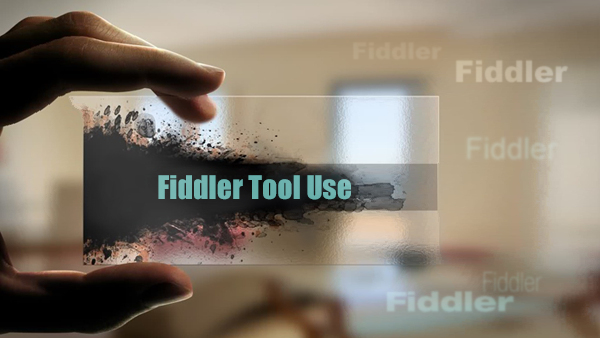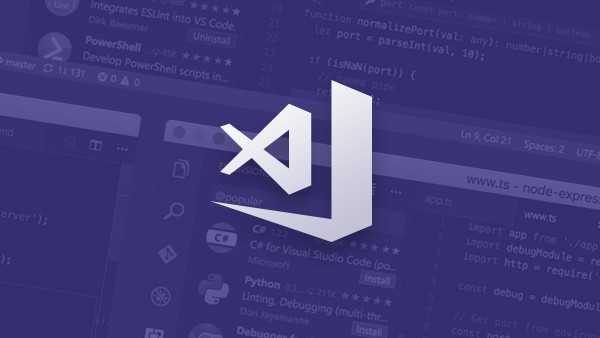本文介绍了Vue3公共组件入门的相关知识,包括Vue3的基础回顾、公共组件的概念与作用以及如何创建和使用公共组件。通过实际示例,详细讲解了如何定义和复用公共组件,帮助开发者提升开发效率。文中还提供了构建可复用模态框组件的实战演练,以及调试与优化的技巧。vue3公共组件入门对于新手来说是一份全面的指南。
Vue3公共组件入门:新手必读指南 Vue3基础回顾Vue3简介
Vue.js 是一个用于构建用户界面的渐进式框架。相较于其他框架,Vue.js 更加轻量级且易于上手。Vue3 是 Vue.js 的最新版本,带来了许多新特性,如 Composition API、响应式系统重构等,使得开发者在构建应用时更加高效。
Vue3与Vue2的区别
Vue3 相较于 Vue2 的主要改进包括:
- Composition API:提供了一种新的方式来组织代码,使得逻辑的复用更加容易。
- 响应式系统重构:Vue3 使用了更高效的数据变更追踪机制,提升了性能。
- TypeScript 支持:Vue3 在设计时就考虑了 TypeScript 的支持,提供了更好的类型推断。
- Teleports 和 Fragments:新增的 Teleports 和 Fragments 实现了更灵活的渲染逻辑。
- Tree-shaking:减少了最终打包文件的体积。
- 更好的错误处理:改进了错误处理机制,使得调试更加方便。
快速搭建Vue3项目
搭建一个基于 Vue3 的项目,可以使用 Vue CLI。首先,确保已安装 Node.js 和 npm。然后,安装 Vue CLI 并初始化项目:
npm install -g @vue/cli
vue create my-project
cd my-project
npm install在项目中安装 Vue3:
vue add vue3接下来,我们可以开始编写 Vue3 项目了。在 src/main.js 中,配置 Vue3 应用的基本结构:
import { createApp } from 'vue';
import App from './App.vue';
const app = createApp(App);
app.mount('#app');在 src/App.vue 中,编写组件的基本结构:
<template>
<div id="app">
<h1>Hello Vue 3</h1>
</div>
</template>
<script>
export default {
name: 'App'
}
</script>
<style scoped>
#app {
text-align: center;
}
</style>公共组件定义
公共组件是指在项目中广泛使用的组件,可以在整个应用的不同模块中重复使用。公共组件通常封装了特定的功能或 UI 元素,例如模态框或按钮,使得代码更加模块化和可复用。
公共组件的好处
使用公共组件可以提升开发效率:
- 代码复用:公共组件可以被多次使用,避免了代码重复。
- 维护性:公共组件的更改可以影响到所有使用该组件的地方,简化了维护过程。
- 一致性:公共组件确保了应用中相同功能的一致性,减少了格式不一致的问题。
- 可测试性:公共组件更容易进行单独测试,确保了组件的稳定性。
常见公共组件示例
常见的公共组件包括:
- 模态框:用于显示弹出窗口,如确认对话框或信息提示。
- 按钮:封装各种按钮样式和交互逻辑。
- 导航条:封装了导航栏的布局和样式。
- 分页器:用于分页显示大量数据。
组件的基本结构
一个 Vue 组件通常包含三部分:模板 (<template>),脚本 (<script>),以及样式 (<style>)。
<template>
<div>
<button @click="handleClick">点击我</button>
</div>
</template>
<script>
export default {
name: 'MyButton',
methods: {
handleClick() {
console.log('按钮被点击');
}
}
}
</script>
<style scoped>
button {
padding: 10px 20px;
background-color: #42b983;
border: none;
border-radius: 5px;
cursor: pointer;
}
</style>公共组件的编写步骤
- 定义组件模板:使用
<template>标签定义组件的 HTML 结构。 - 编写组件逻辑:使用
<script>标签定义组件的 JavaScript 逻辑。 - 添加组件样式:使用
<style>标签定义组件的 CSS 样式。 - 注册组件:在 Vue 应用中注册组件,以便在其他组件中使用。
- 使用组件:在其他组件或模板中通过标签名来调用组件。
使用props传递数据
props 是一种从父组件传递数据到子组件的方式。例如,定义一个接收 label 属性的按钮组件:
<template>
<button @click="handleClick">{{ label }}</button>
</template>
<script>
export default {
name: 'MyButton',
props: {
label: String
},
methods: {
handleClick() {
console.log('按钮被点击');
}
}
}
</script>在父组件中使用该按钮组件,并传递 label 属性:
<template>
<div>
<MyButton label="点击我" />
</div>
</template>
<script>
import MyButton from './MyButton.vue';
export default {
components: {
MyButton
}
}
</script>在Vue3中注册组件
组件注册分为全局和局部两种方式。
全局注册:
import MyButton from './components/MyButton.vue';
import { createApp } from 'vue';
const app = createApp(App);
app.component('MyButton', MyButton);局部注册:
在需要使用的组件中进行注册:
<template>
<div>
<MyButton label="点击我" />
</div>
</template>
<script>
import MyButton from './MyButton.vue';
export default {
components: {
MyButton
}
}
</script>在模板中使用组件
使用注册的组件时,直接使用组件标签名即可:
<MyButton label="点击我" />动态组件的使用
动态组件通过 component 标签和 is 属性来实现:
<template>
<div>
<component :is="currentComponent"></component>
</div>
</template>
<script>
import MyButton from './MyButton.vue';
import MyModal from './MyModal.vue';
export default {
components: {
MyButton,
MyModal
},
data() {
return {
currentComponent: 'MyButton'
};
},
methods: {
switchComponent() {
this.currentComponent = this.currentComponent === 'MyButton' ? 'MyModal' : 'MyButton';
}
}
}
</script>
``
在代码中通过 `currentComponent` 控制当前渲染的组件:
```html
<template>
<div>
<component :is="currentComponent"></component>
<button @click="switchComponent">切换组件</button>
</div>
</template>组件的复用策略
- 抽象公共逻辑:将公共逻辑封装到一个独立的组件中。
- 组件组合:通过组合多个简单的组件来构建复杂的功能。
- 组件库:开发或使用成熟的组件库以复用现成的组件。
组件性能优化方法
- 减少不必要的渲染:使用
v-if和v-show优化条件渲染。 - 优化DOM操作:减少不必要的 DOM 操作和重绘。
- 使用缓存:利用缓存减少数据请求次数。
- 懒加载:延迟加载非关键组件。
状态管理与组件的解耦
- 状态管理工具:使用 Vuex 或 Pinia 管理应用状态。
- 解耦组件:组件之间尽量减少直接通信,采用事件总线或状态管理工具进行解耦。
- 高阶组件:使用高阶组件封装通用逻辑,增加组件的可复用性。
从需求到实现
假设我们需要构建一个可复用的模态框组件。该组件应该支持自定义标题、内容和按钮。
代码详解与实战
定义 Modal.vue 组件:
<template>
<div v-if="visible" class="modal">
<div class="modal-content">
<div class="modal-header">
<span>{{ title }}</span>
<button @click="closeModal">X</button>
</div>
<div class="modal-body">
<slot></slot>
</div>
<div class="modal-footer">
<button @click="closeModal">关闭</button>
</div>
</div>
</div>
</template>
<script>
export default {
name: 'Modal',
props: {
visible: Boolean,
title: String
},
methods: {
closeModal() {
this.$emit('close');
}
}
}
</script>
<style scoped>
.modal {
position: fixed;
top: 0;
left: 0;
width: 100%;
height: 100%;
display: flex;
justify-content: center;
align-items: center;
background-color: rgba(0, 0, 0, 0.5);
}
.modal-content {
background-color: white;
border-radius: 5px;
padding: 20px;
box-shadow: 0 2px 10px rgba(0, 0, 0, 0.1);
}
.modal-header {
display: flex;
justify-content: space-between;
align-items: center;
border-bottom: 1px solid #ddd;
padding-bottom: 10px;
}
.modal-footer {
text-align: right;
padding-top: 10px;
}
</style>在父组件中使用:
<template>
<div>
<button @click="openModal">打开模态框</button>
<Modal :visible="isModalVisible" title="这是标题" @close="closeModal">
<p>这是内容区域</p>
</Modal>
</div>
</template>
<script>
import Modal from './Modal.vue';
export default {
components: {
Modal
},
data() {
return {
isModalVisible: false
};
},
methods: {
openModal() {
this.isModalVisible = true;
},
closeModal() {
this.isModalVisible = false;
}
}
}
</script>调试与优化技巧
- 利用Vue Devtools:使用 Vue Devtools 插件调试组件状态和渲染问题。
- 代码审查:定期进行代码审查,确保组件的健壮性和可维护性。
- 性能测试:使用 Lighthouse 等工具测试组件性能,优化组件性能。
通过以上步骤,我们可以构建出一个可复用的模态框组件,并将其应用到实际项目中。

 随时随地看视频
随时随地看视频




